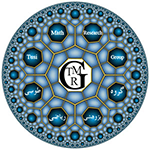Abstract
We define two new types of spectrum, called the $\varepsilon$-left (or right) pseudospectrum and the $\varepsilon$-left (or right) condition spectrum, of an element $a$ in a complex unital Banach algebra $A$. We prove some basic properties among them the property that the $\varepsilon$-left (or right) condition spectrum is a particular case of Ransford spectrum. We study also the linear preserver problem for our defined functions and we establish the following:
(1) Let $A$ and $B$ be complex unital Banach algebras and $\varepsilon>0$. Let $\phi : A \longrightarrow B$ be an $\varepsilon$-left (or right) pseudospectrum preserving onto linear map. Then $\phi$ preserves certain standard spectral functions.
(2) Let $A$ and $B$ be complex unital Banach algebras and $0 \lt \varepsilon \lt 1$. Let $\phi : A \longrightarrow B $ be a unital linear map. Then
(a) If $\phi$ is an $\varepsilon$-almost multiplicative map, then $\sigma^{l}(\phi(a))\subseteq \sigma^{l}_\varepsilon(a)$ and $\sigma^{r}(\phi(a))\subseteq \sigma^{r}_\varepsilon(a)$, for all $a \in A$.
(b) If $\phi$ is an $\varepsilon$-left (or right) condition spectrum preserving, then (i) if $A$ is semi-simple, then $\phi$ is injective; (ii) if B is spectrally normed, then $\phi$ is continuous.
Citation
Sayda Ragoubi. "On linear maps preserving certain pseudospectrum and condition spectrum subsets." Adv. Oper. Theory 3 (2) 423 - 432, Spring 2018. https://doi.org/10.15352/AOT.1705-1159
Information





